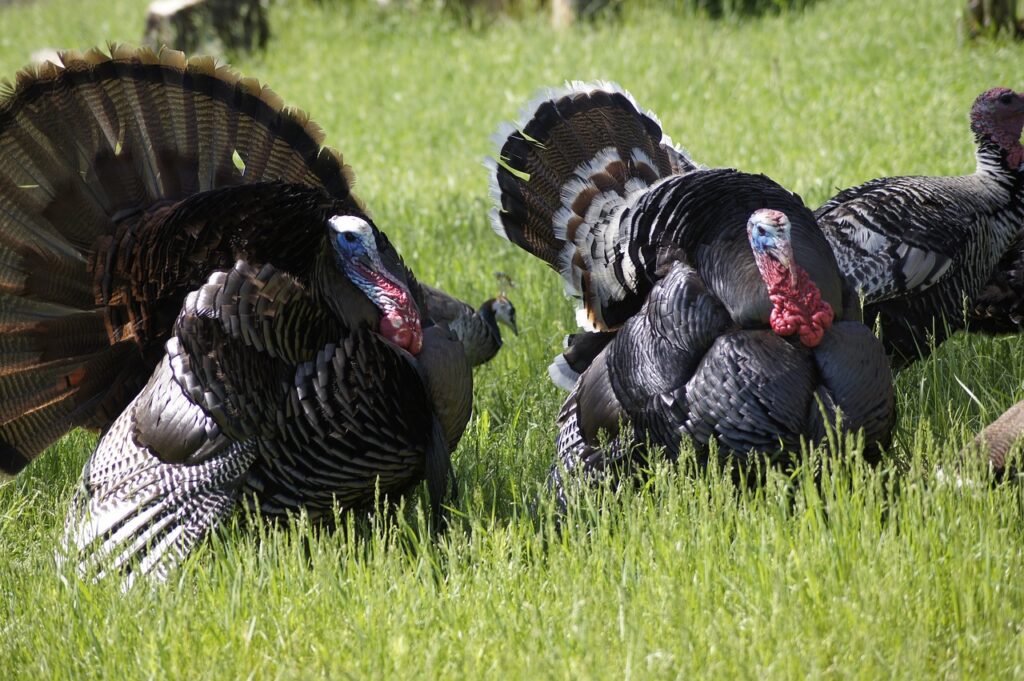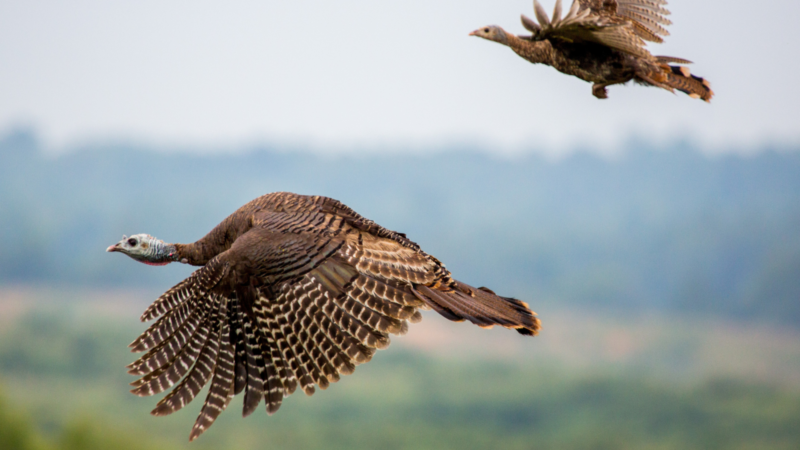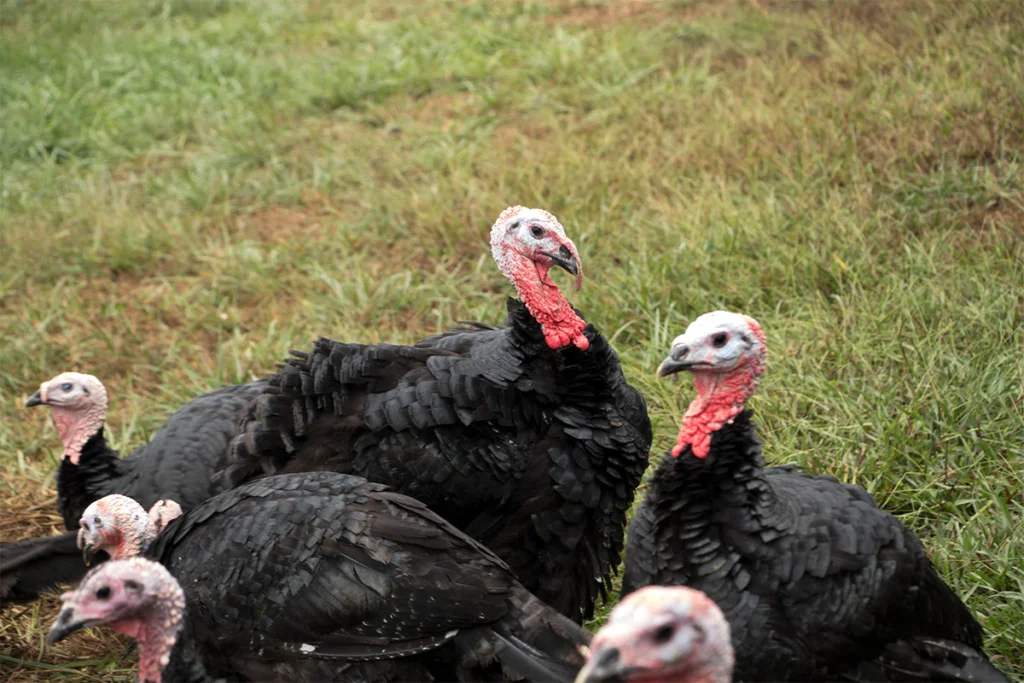Turkeys don’t appear to be untamed birds. It might be difficult to remember that turkeys are wild birds as well because we are so accustomed to seeing gobblers on farms and at Thanksgiving dinner tables.
It’s also difficult to see these large, hefty birds ascending to the air with that in mind. But wild turkeys actually have wings, and they can really soar!

Turkeys fly when? Can they stay in the air for a long time? To find out the answers to these queries and more about flying turkeys, read this article!
Can Turkeys Fly?
Turkeys are undoubtedly able to fly. These are still fairly terrestrial birds, with a strong preference for running.

These large, distinctive birds are typically observed walking, feeding in farm fields, or utilizing their legs to get through the understory of forests.
Nevertheless, Wild Turkeys may also soar when necessary. Turkeys use flight, much like any other bird, to elude predators. A turkey may launch itself into the air and go as quickly as far as it can if it detects a bobcat approaching that is a little too near for comfort.
If the bird senses that it has to get away from a human rapidly, it will act in the same way. Wild turkeys typically flutter up onto the closest tree when flying in this manner.
Note
Because they are unable to stay in the air for extended periods of time, turkeys must locate a suitable perch quickly.
To pass the night, they also soar high into trees. Because it’s dangerous for them to sleep on the ground, turkeys would much rather roost far above any potential threats.
Wild turkeys have the ability to fly if they sense danger. In a large open field, a turkey may decide to glide to cover rather than sprint if it spots a potential predator.
Can Turkeys Raised in Captivity Fly?
Young domesticated turkeys can fly to some extent at first. They can flutter to the top of hay bales, barn rafters, or other perches before they have completely grown into adult birds. But often, these juvenile birds aren’t able to fly as far or as high as Wild Turkeys.

Their breast muscles are still sometimes a little too massive for prolonged, sustained flight, even if they are still light and thin enough to fly a little.
Note
Domesticated turkeys have far higher breast muscle mass than wild turkeys since they have been carefully raised to be eaten.
The turkey’s capacity to flap its wings is ultimately diminished, despite the fact that this offers them powerful breast muscles that are utilized for flying. The bird eventually runs out of time to flap its wings quickly enough to take off.
Adult farmed turkeys are unable to fly mostly due to their weight, which is a significant component in any bird’s ability to fly. Whatever the species, a bird simply won’t be able to produce enough flying force to get off the ground if it gets above a particular weight barrier.
Adult farmed turkeys soon lose their ability to fly since they are intentionally bred to be hefty birds.
Interesting Facts About Turkeys and Their Flight
- Although they may not fly frequently, wild turkeys may move astonishingly quickly when they do. These large birds can achieve 55 mph for brief periods of time!
- Turkeys often take a few swift steps and then launch themselves into the air, flapping their wings rapidly. They glide through the air for dozens of feet after multiple wingbeats.
- These large birds are also capable of swiftly and unexpectedly taking off from a standing position in an emergency.
- When wild turkeys reach the age of four or five weeks, they start to fly.
- Turkeys use their large, spherical wings to fly. Their wingspan is about five feet long!
- Although they can’t soar, turkeys can glide in the air. That’s why we don’t see them flying in the air above farms and woods in circles.
- Flocks of wild turkeys frequently fly together. Several can be observed flying simultaneously as they move between the eating and roosting regions.
Conclusion
In conclusion, while turkeys may not be renowned for their aerial prowess, they are indeed capable of flight, especially in moments of danger or when seeking shelter. Wild turkeys utilize their ability to fly to evade predators and find safe roosting spots high in trees. However, domesticated turkeys, bred for their meat, often lose the ability to fly due to their increased weight. Despite this, turkeys, both wild and domestic, exhibit fascinating behaviors when in flight, showcasing their agility and adaptability in various environments.
FAQs (Frequently Asked Questions)
Do turkeys fly frequently?
While turkeys are primarily terrestrial birds, they are capable of flight, especially in moments of danger or when seeking shelter.
At what age do turkeys start to fly?
Wild turkeys typically start flying at around four or five weeks of age.
Can domesticated turkeys fly?
Domesticated turkeys may exhibit limited flight capabilities when young, but as they grow and gain weight, they often lose the ability to fly due to their increased size.
How fast can turkeys fly?
Turkeys can achieve speeds of up to 55 mph for brief periods of time, showcasing their surprising agility in flight.
Why don’t we see turkeys flying in circles above farms and woods?
While turkeys are capable of gliding in the air, they are not known for sustained soaring like some other bird species. Instead, they tend to glide and flap their wings for short distances when flying.
